Some science you’re doing, something that’s so far out and no one else cares, but you are interested in it. And that’s, I think, the best kind of science to do — where you’re doing something no one else cares about but you really feel is interesting.

Venkatraman Ramakrishnan was born in Chidambaram, India. His parents were both scientists — his father was a biochemist, his mother a psychologist. At the time of his birth, his father was working in the United States. He was still a small child when his mother spent 18 months in Canada earning a graduate degree. When Venki, as he prefers to be called, was three years old, the family settled in Baroda (now known as Vadodara) in the state of Gujarat, where his father took up an appointment as head of the newly created Department of Biochemistry at the University of Baroda. The move posed a hardship for the young boy as it meant making a switch from his mother tongue, Tamil, to the local language, Gujarati. His parents enrolled him in an English-language school. Although the feeling of being an outsider has remained with him through the many moves of his subsequent career, his command of the English language has served him well. His fourth and fifth grades were spent in Australia, and he advanced two grades ahead of his age cohort in primary school.
Venki Ramakrishnan grew up surrounded by scientists and naturally looked on science as a potential career for himself as well. At age 16, he entered the University of Baroda. He found the teaching of life sciences — botany and zoology — tedious and old-fashioned and was more excited by the newly introduced physics curriculum. He graduated with honors in physics just as his parents were preparing to take a sabbatical year at the University of Illinois, Urbana-Champaign. He followed his parents to the United States but rather than undertake further undergraduate training as the University of Illinois would have required, he enrolled in the graduate program at Ohio University. He was only 19 when he arrived in the United States, little knowing he would spend the next 28 years of his life there.
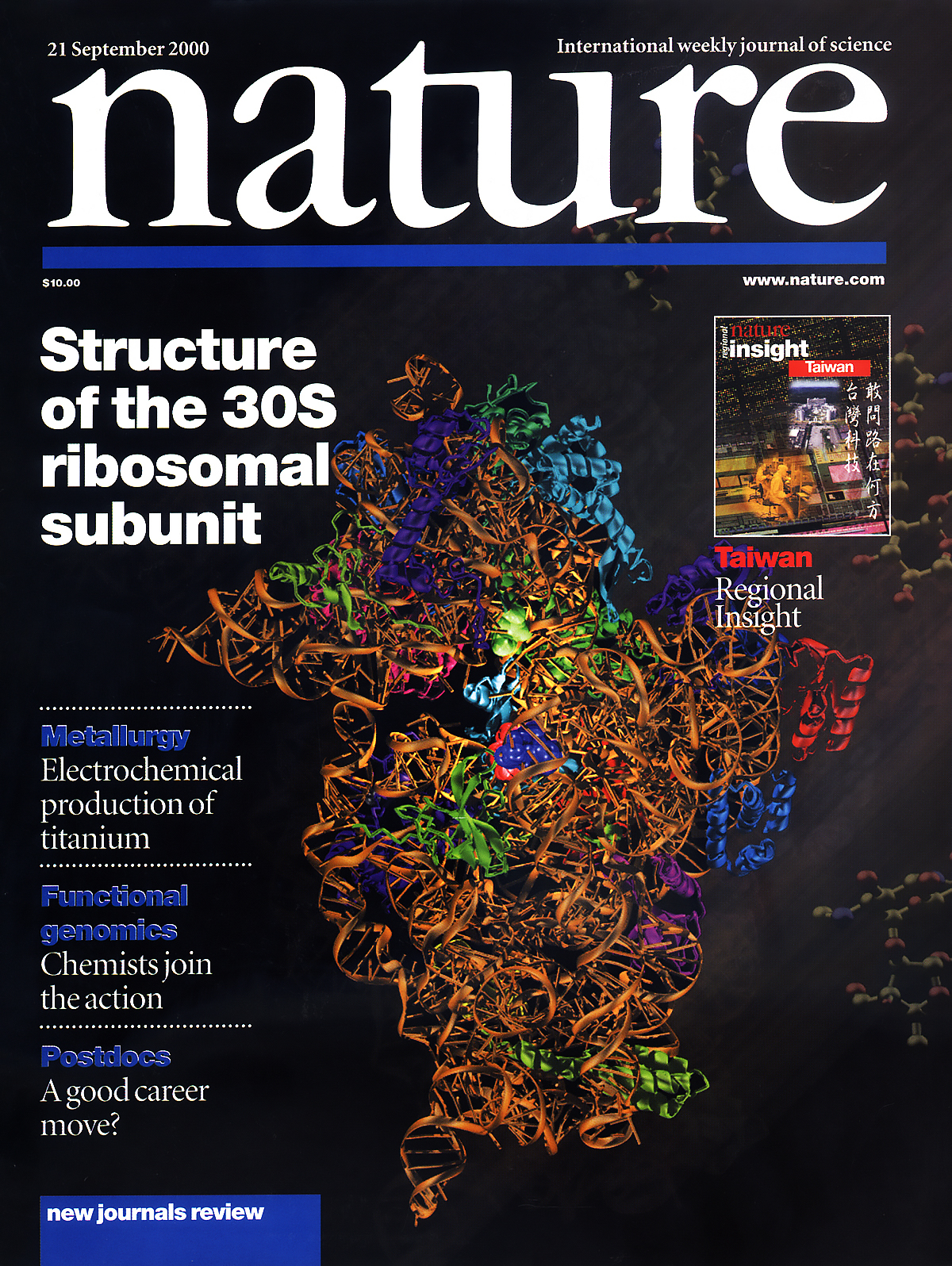
His interest in physics waned in Ohio, but he made a more important discovery when he met Vera Rosenberry, an art student with one small child from a previous marriage. The two became inseparable, and by age 23, Venki Ramakrishnan had a wife and a five-year-old stepdaughter, Tanya. Newly inspired to persevere in his scientific career, he completed his dissertation and received his physics degree in 1976, a month before the birth of his son, Raman.
By this time, he saw few opportunities for fundamental discoveries in physics, and his attention had turned to biology. He explored the possibility of undertaking postdoctoral work in biochemistry at Yale. He made contact with two scientists there, Don Engelman and Tom Steitz, who would play a significant role in his subsequent career. But at the time, he felt he lacked the background in biology to plunge directly into postdoctoral work. Instead, he enrolled in the biology department of the University of California, San Diego, ostensibly to pursue a second graduate degree.
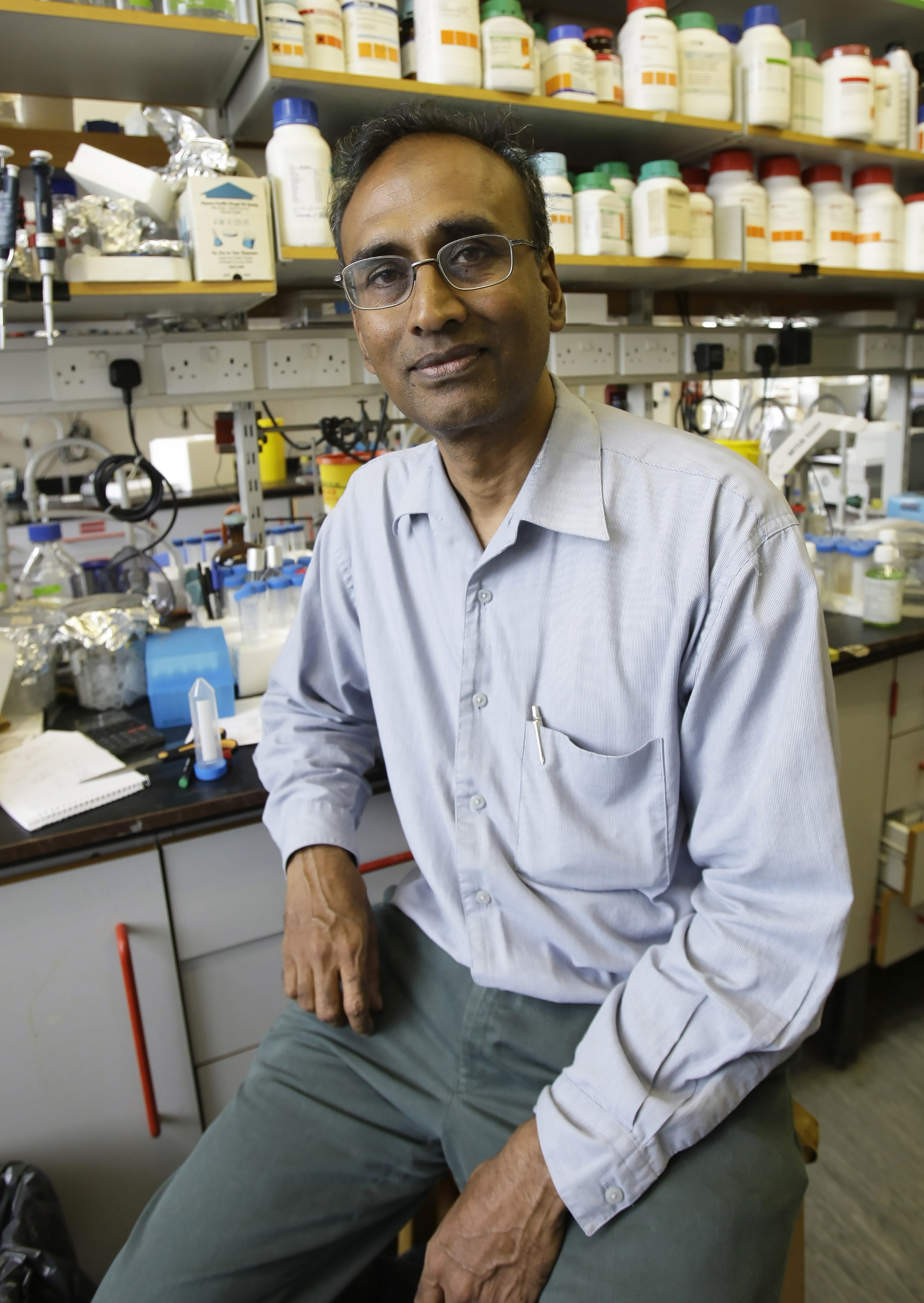
While in San Diego, he read an article in Scientific American by Engelman and a Yale colleague, Peter Moore, about their study of the ribosome, a structure present in every living cell that both manufactures proteins and arranges them according to the sequence encoded by the DNA molecules within the nucleus. Ramakrishnan was fascinated. After two years in San Diego, he believed he had acquired sufficient preparation in biology to undertake postdoctoral research. He contacted Engelman at Yale and was offered a postdoctoral position. Only two years after arriving in San Diego, the young family pulled up stakes and moved to New Haven.
Working in Peter Moore’s lab at Yale, Ramakrishnan participated in mapping the location of proteins within the 30S subunit, one of two major components of the ribosome. As part of his research, Ramakrishnan took part in work being done at Brookhaven National Laboratory using neutron scattering to observe the position of molecules in living cells. As he became more deeply involved in this research, he came to believe that a different technique, x-ray crystallography, could be applied to this work with superior results.
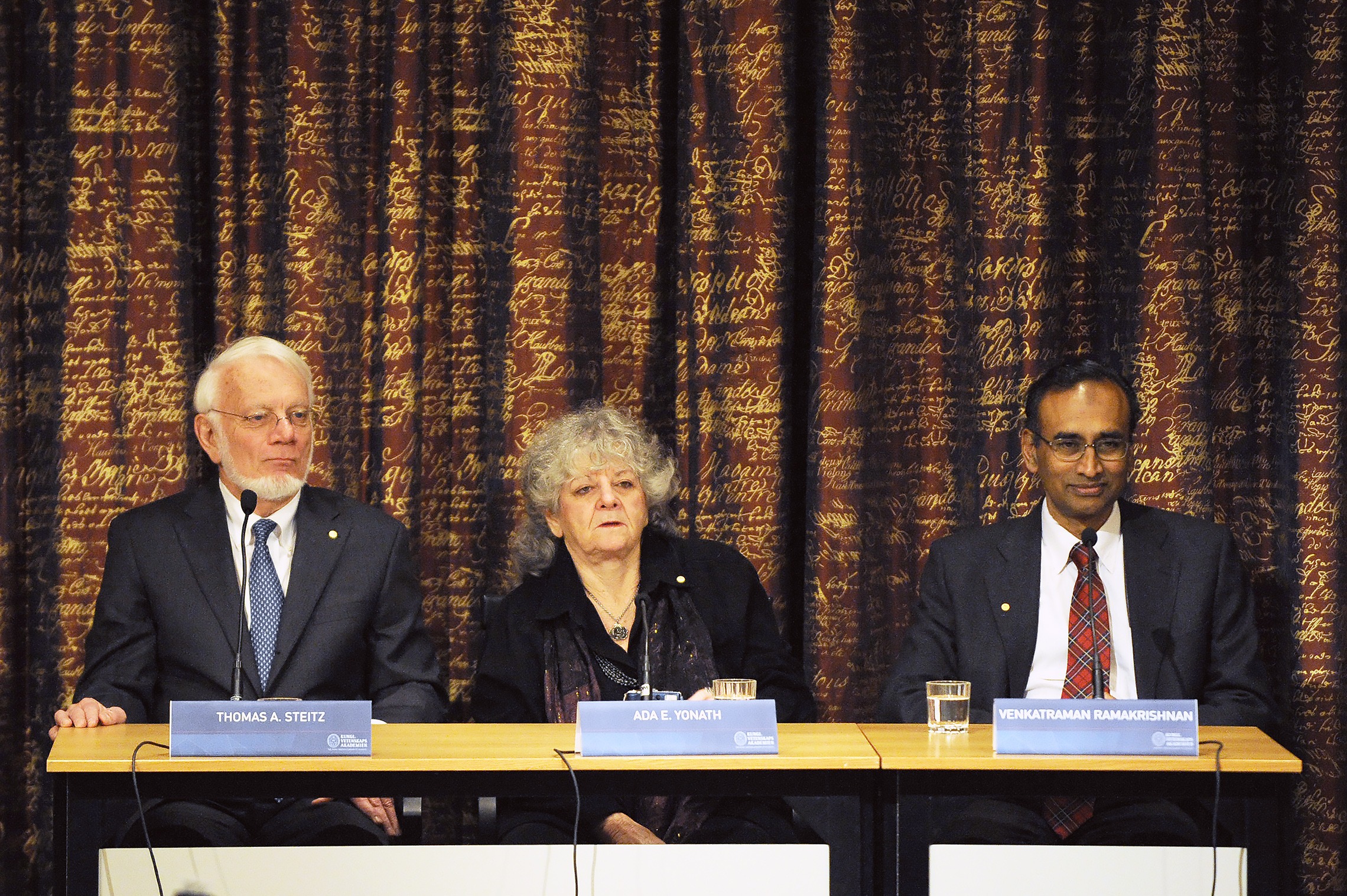
In X-ray crystallography, a crystallized form of the substance to be analyzed is struck with an x-ray, causing the constituent atoms of the substance to scatter. By analyzing the pattern of radiation emerging from the crystal, scientists can determine exactly how the atoms are positioned within the crystallized substance. The work of creating such crystals is difficult, and experiments must be repeated many times to obtain consistent results. Crystallizing the molecules of organic matter, such as the proteins of living things, carries still greater complications, and the application of the technique to biology did not appear promising to everyone, but Venki Ramakrishnan saw an extraordinary opportunity in the technology and was determined to pursue it.
When he completed his appointment at Yale, Ramakrishnan applied to a number of American universities for teaching and research positions, but his unusual résumé attracted no replies. The idea of a physicist-turned-biologist with experience in neutron scattering and an interest in crystallography was a hard one for many institutions to grasp, and even his record of postdoctoral work at Yale failed to impress readers underwhelmed by his previous academic credentials. In all, Venki Ramakrishnan applied to over 50 institutions without being invited for a single interview. After a false start at Oak Ridge Laboratory in Tennessee, he finally found a congenial appointment at Brookhaven National Laboratory. Vera and the children prepared for yet another move, from rural Tennessee to suburban Long Island.
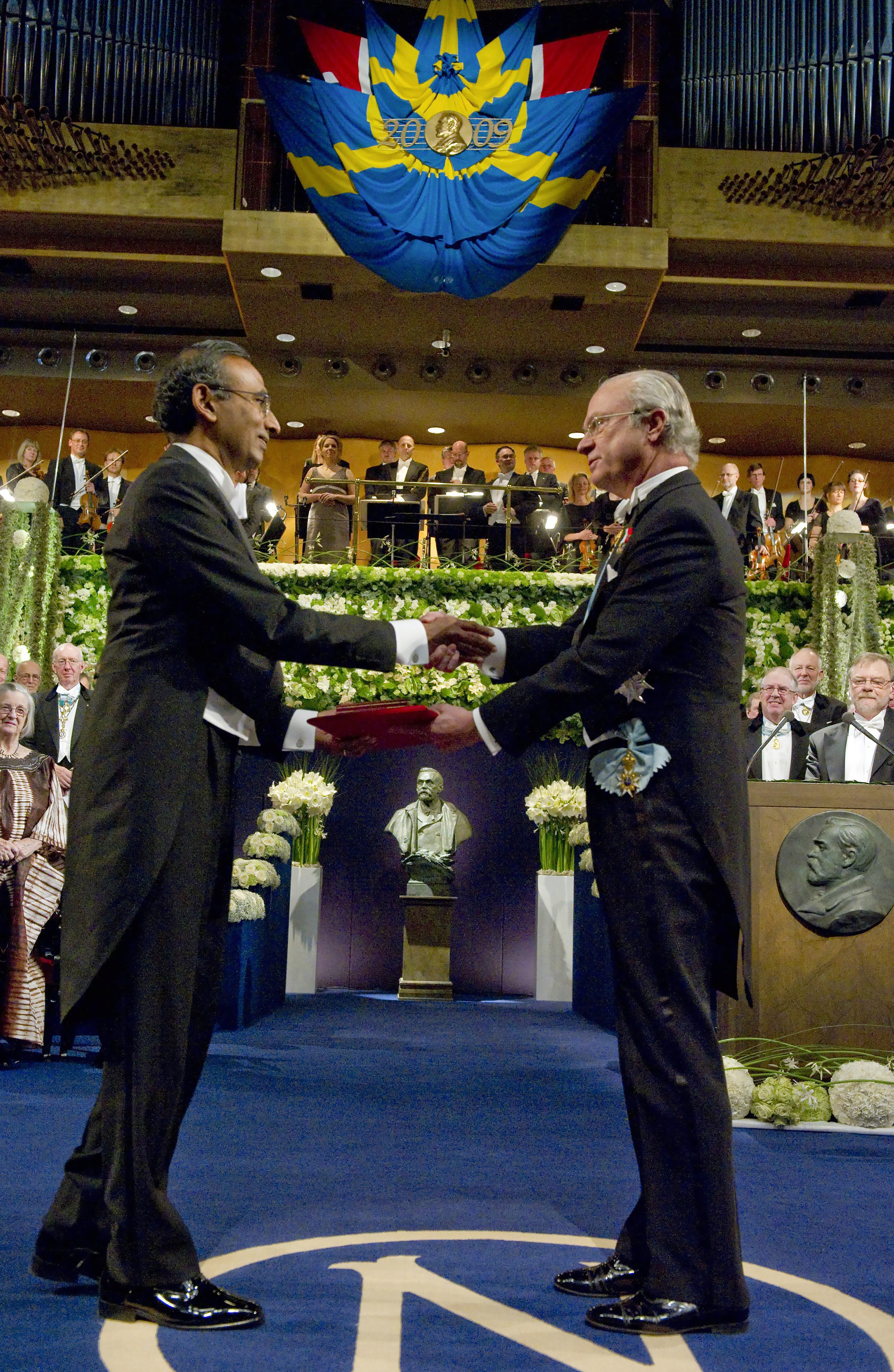
At Brookhaven, Ramakrishnan was at last free to pursue his own line of research. His work on the ribosome at Brookhaven led to his first independent scientific paper, a single-author publication in the journal Science. Meanwhile, progress in genome sequencing and in cloning was accelerating the pace of biomolecular research. To progress further in his work, Ramakrishnan believed he needed to master the crystallization techniques practiced at the MRC (Medical Research Council) Laboratory of Molecular Biology (LMB) at Cambridge University in England. Ramakrishnan and his family spent his sabbatical year at Cambridge, supported by Brookhaven and a Guggenheim Fellowship.
On his return to Brookhaven, after completing his last neutron scattering experiments on other subjects, Ramakrishnan began to focus entirely on the crystallography of ribosomal proteins and factors. His experience at Cambridge had made him impatient with the strictures of a government-run national laboratory. He applied to LMB in Cambridge for a permanent position but nothing was available at the time. Instead, he accepted an offer from the University of Utah in Salt Lake City. The job came with a 30-percent salary increase and a talented team of colleagues and assistants.
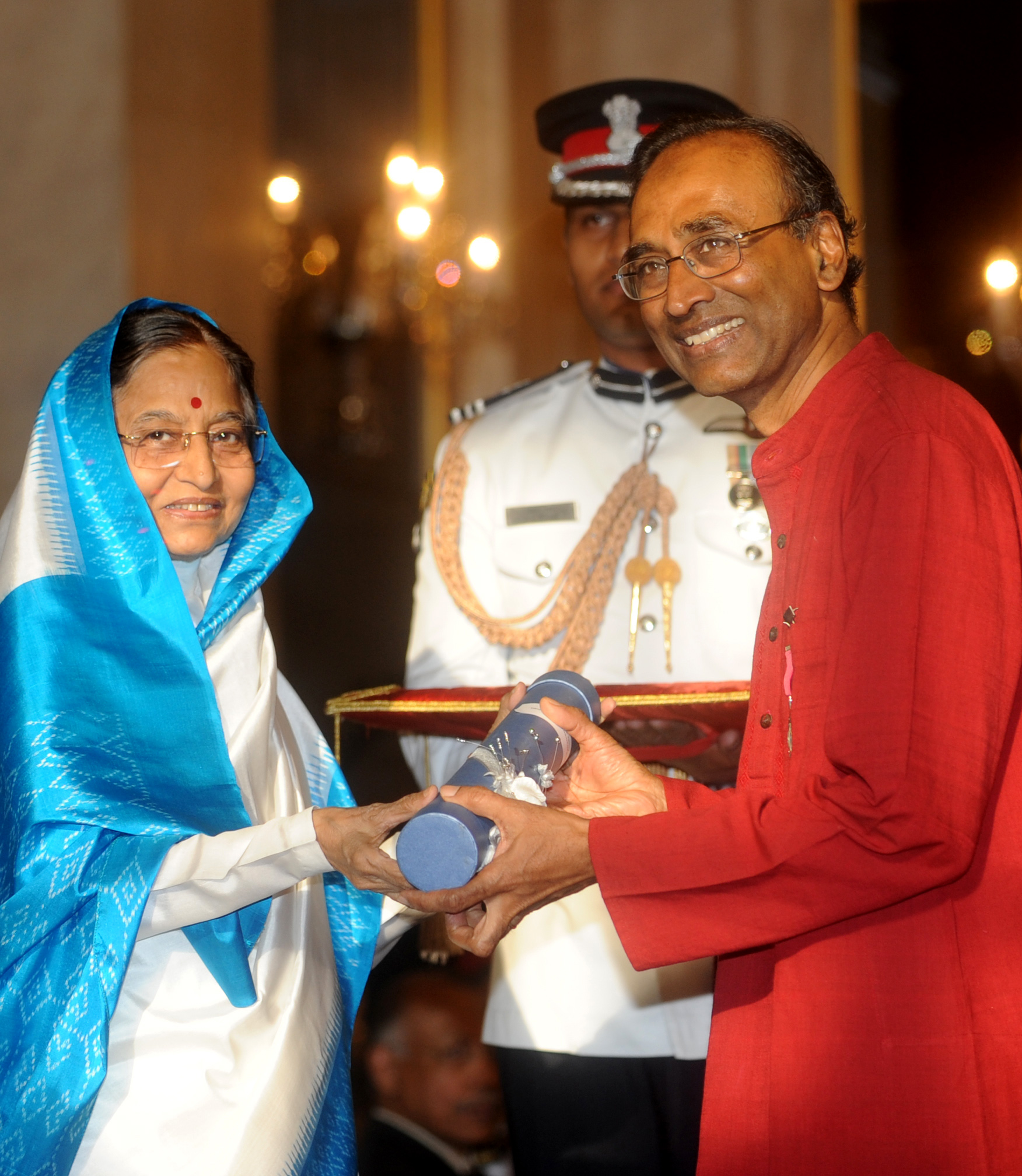
Life in Utah suited the Ramakrishnans, who enjoyed hiking in the surrounding mountains. Ramakrishnan had set himself a specific challenge, solving the entire molecular structure of the ribosome, starting with its smaller component, the 30S subunit he had first studied at Yale. Although he enjoyed the support of an excellent team at Utah, the project was an ambitious one for the university’s resources and facilities. While on his way to a conference in Sweden, he met again with sympathetic colleagues at Cambridge. A position had opened up at the LMB and Cambridge had resources and facilities better suited to a head-on assault on the ribosome. Ramakrishnan was convinced that this project was the most important work he could pursue in his field, and he was well aware that another pioneer in the field, Ada Yonath of Israel’s Weizmann Institute, might soon turn her attention to the same goal. Accepting the job at Cambridge would mean taking a 40-percent pay cut and giving up the outdoor lifestyle he and Vera enjoyed in Utah. It would also mean living thousands of miles from Tanya and Raman, now grown and pursuing careers of their own, Tanya in medicine, Raman in classical music. Vera agreed to the move, on condition that they remain in Cambridge and make no further moves to advance his career. In April 1999, Venki and Vera moved to Cambridge to begin their new life.
During his last months in Utah, Ramakrishnan had narrowed his focus to the 30S subunit, creating a crystallized form of 30S to which he and his team could apply refraction technology and analyze its molecular structure. In England, he continued to send work to colleagues in Utah for analysis. This transatlantic, transcontinental teamwork paid off. Within a few months of his arrival in Cambridge, Ramakrishnan could report a major breakthrough, the entire central domain of the 30S subunit. He shocked the audience at an international ribosome conference in Denmark with his findings, published in Nature in August 1999.
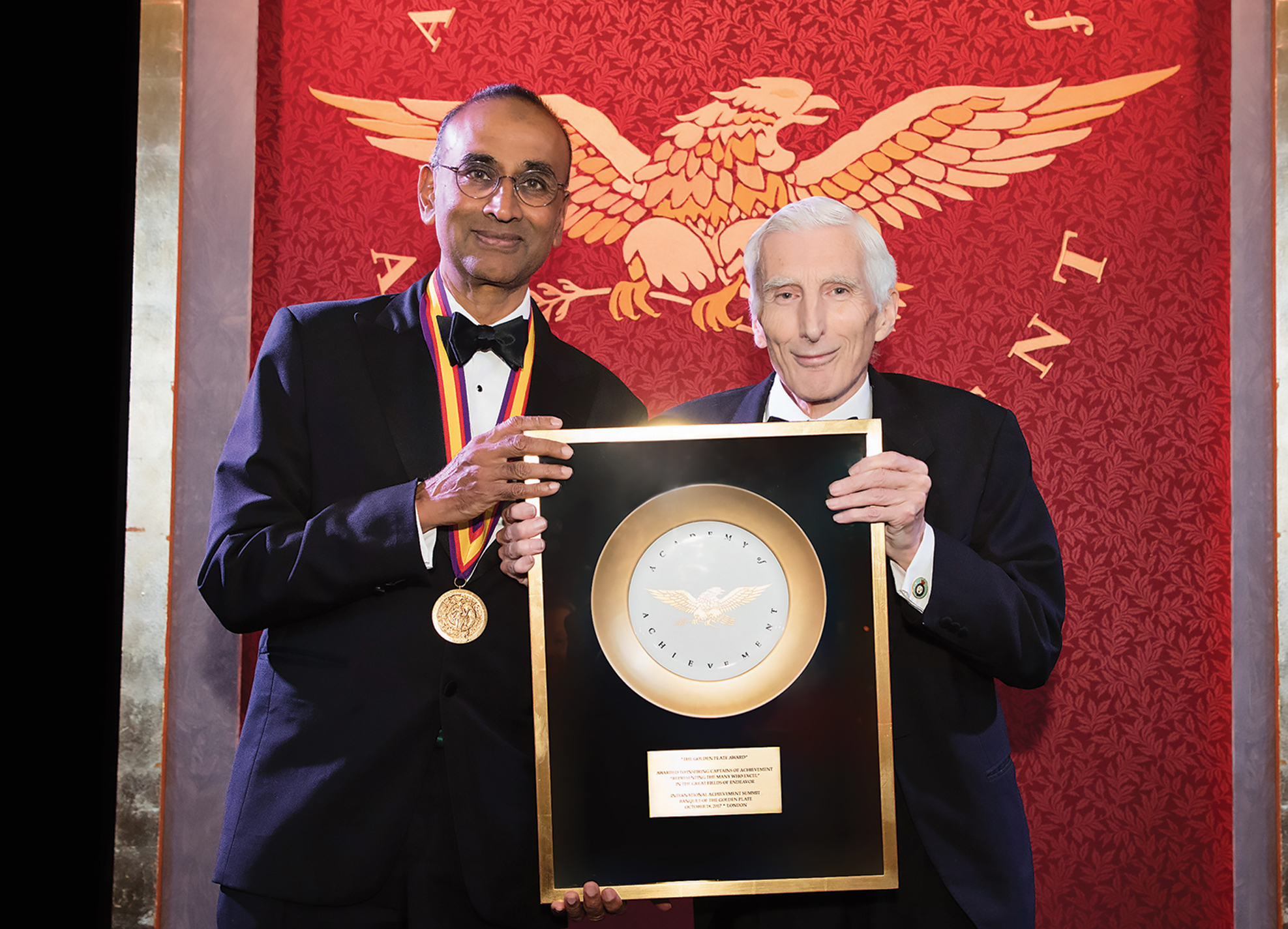
As he continued his effort to map the entire 30S subunit, Ramakrishnan was well aware that his old Yale colleagues Tom Steitz and Peter Moore, as well as Ada Yonath, were all working on the same problem. The only laboratory where his team could harvest the data they sought from the crystals they had created was the beamline at the Advanced Photon Source (APS) at Argonne National Laboratory in Illinois. In February 2000, Ramakrishnan and a team of four booked time there, working around the clock in 12-hour shifts. The task was grueling, but when the results appeared, Ramakrishnan could hardly contain his excitement. Within weeks, they had built a complete atomic model of the 30S subunit.
Ramakrishnan and his team were also able to observe the interaction of the ribosome with three different antibiotics. His research led to the high-resolution crystallization of the entire ribosome. Many more developments have followed from his research, but among the most important is a clear insight into how antibiotics work to disable the ribosomes of bacteria while sparing those of the human host. This discovery will enable the creation of more and better antibiotics and possibly bypass the risk of creating antibiotic-resistant microbes.

Beginning in 2002, Dr. Ramakrishnan, who holds dual British and American nationality, began to travel frequently to the land of his birth. He now lectures a few months a year at the Indian Institute of Science in Bangalore. In 2002, he also became a member of the European Molecular Biology Organization (EMBO) and the following year was named a Fellow of the Royal Society. Founded in 1660, the Royal Society is the world’s oldest independent scientific association. Ramakrishnan is also a member of the U.S. National Academy of Sciences and is a Foreign Fellow of the National Science Academy of India. He received a major European scientific honor, the Louis-Jeantet Prize for Medicine, in 2007.
In 2009, Venki Ramakrishnan was awarded the Nobel Prize in Chemistry, sharing the prize with Tom Steitz and Ada Yonath “for mapping the ribosome — one of the cell’s most complex machineries — at the atomic level.” Ramakrishnan’s achievements were enthusiastically celebrated in his native India, as well as in his adopted home of Britain. He was knighted by Queen Elizabeth II in 2012 for services to molecular biology, although he does not use the title “Sir.” In 2015, he was elected to a five-year term as President of the Royal Society, an honor previously held by Sir Isaac Newton, among others.
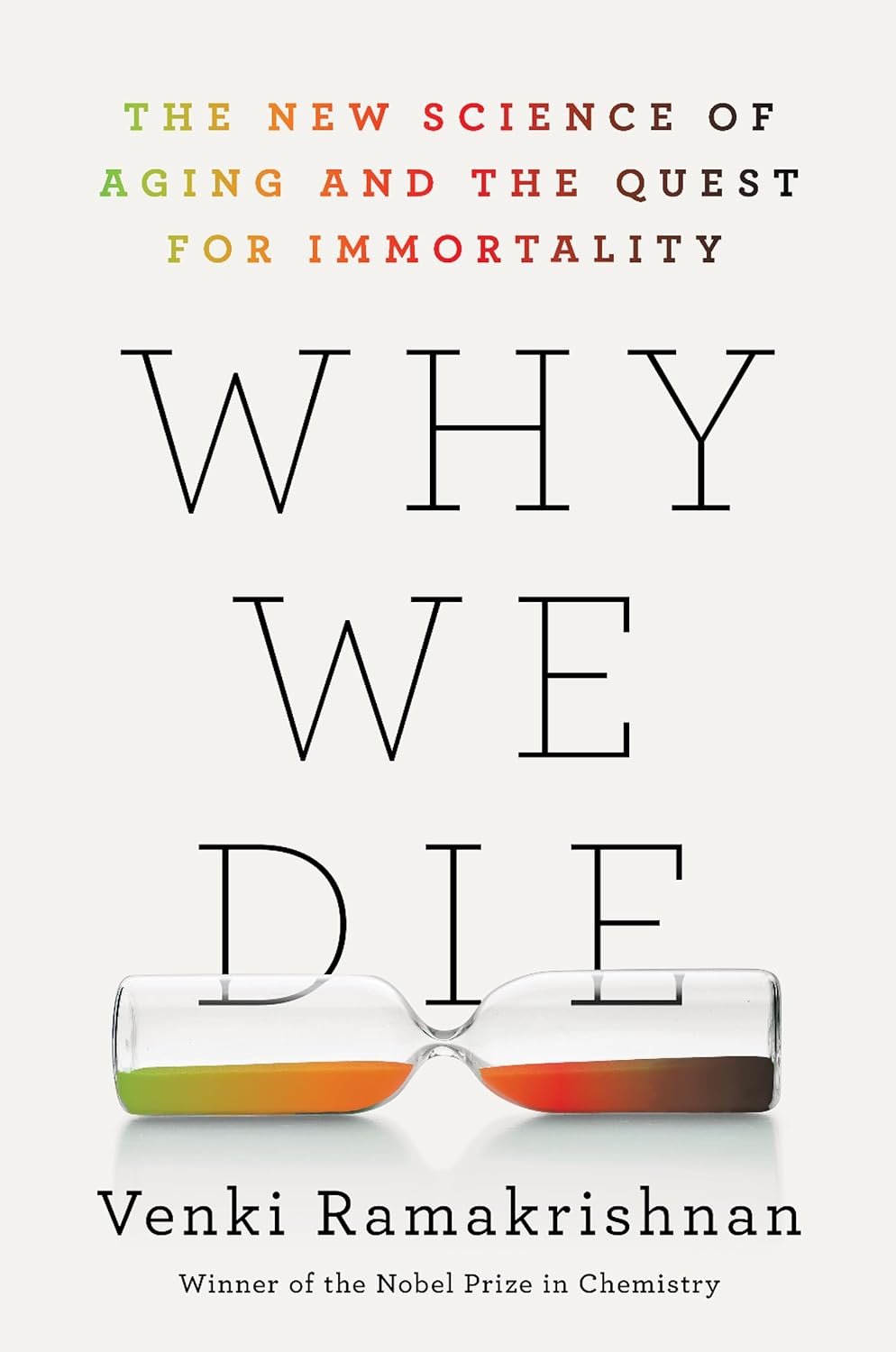
In addition to his illustrious career in science, Venki Ramakrishnan has also distinguished himself as an author, contributing significantly to the public’s understanding of molecular biology through his books. Gene Machine, published in 2018, offers an insider’s look at the thrilling discovery of the ribosome’s structure, blending the narrative of scientific pursuit with personal reflections on Ramakrishnan’s own journey in the world of high-stakes research. Following this, his 2024 release, Why We Die: The New Science of Aging and the Quest for Immortality, ventures into the evolving science of aging, questioning the inevitability of death and exploring the potential for extending human life. These works not only highlight Ramakrishnan’s pivotal discoveries but also reflect his deep engagement with the broader implications of these advancements for society and our understanding of life itself. Through his writing, Ramakrishnan extends the reach of his scientific achievements, engaging a wider audience in the complex interplay between biology, ethics, and the future of human health.
Venki Ramakrishnan and Vera Rosenberry live in the village of Grantchester, close enough to central Cambridge and LMB for him to commute by bicycle in good weather. While Venki Ramakrishnan was pursuing his career, Vera became a successful writer and illustrator of children’s books, with over 30 titles to her credit. Their daughter, Tanya, is a public health physician in Portland, Oregon. Their son, Raman, is the cellist of the Daedalus Quartet, based in New York City.

Venki Ramakrishnan was born in India to a family of scientists. He had already earned a Ph.D. in physics when his attention turned to molecular biology. As a postdoctoral fellow at Yale, he began his research on the structure and function of the ribosome, a major structure in all cells that interprets genetic instructions to produce proteins.
At first, few appreciated the value of his research. He applied to roughly 50 universities in the United States before he secured his first academic appointment. A move to Cambridge University in 1999 led to major breakthroughs in his research. By 2007, his laboratory had determined the atomic structure of the entire ribosome, discoveries that not only yield insight into protein synthesis but expand our understanding of the antibiotic function.
His research, which has appeared in the journals Nature, Science, and Cell, brought him the 2009 Nobel Prize in Chemistry. A group leader at the MRC Laboratory of Molecular Biology in Cambridge, England, he is now serving as President of the Royal Society, the world’s oldest scientific association.
Today you’re a Nobel Prize winner and President of the Royal Society, but when you completed your postdoctoral fellowship at Yale, you applied to more than 50 academic institutions before you found a job in the United States. All of those institutions turned you down. What were they thinking?
Venki Ramakrishnan: I had an undergraduate degree in physics from India. Then I went to Ohio University — which is a decent university, but it’s not like a top-ranked university — and did theoretical physics. Then I switched to biology at University of California, San Diego, but I didn’t go on to get a second degree. Then I used a weird technique, neutron scattering, to look at a biological problem. Then I’m applying to biology and biochemistry departments. These people look at — so there are two kinds of places — one is research universities, and they look at neutron scattering, and they think, “Does this guy want a nuclear reactor? We don’t have one on campus, and anyway, what’s this neutron scattering going to do for biology? And he’s been to all these sorts of — we don’t even know what to make of his CV, and he doesn’t have any papers in top fancy journals,” and so on. So they just put my application into pile B, and I probably have done the same thing. Then I also applied to four-year colleges. America has lots and lots of excellent four-year colleges — and some not so excellent ones, too. They probably saw, “Hey, wait a minute. Look at this guy’s long name. He’s from India. We don’t even know if he speaks English. How do we know he’s even going to be able to teach? And he has this slightly weird background.” So I went into pile B for them, too. So I was actually lucky, in the end, to get a job at a national lab.
The thing was, I didn’t drop out of science. And so the point I want to make is, despite all this, I tried to keep my options open. So I went to Oakridge National Lab, and that didn’t last very long because I went there under a misunderstanding, and it turned out I couldn’t do my own research. Then I got bailed out a second time when I went to Brookhaven National Lab. The point is, at each point, I was trying to keep my options open to be able to continue to do science rather than dropping out. I did have a plan B or C. I could have become a computer programmer because this was still in the early ‘80s, and Silicon Valley had not taken off yet. It was just about to take off. Or I could have become a high school science or math teacher. Those were my two options. I think certainly I would have been happy as a high school science and math teacher. I think that’s a very worthy profession.
How did you become interested in ribosomes?
Venki Ramakrishnan: I think I got into ribosomes somewhat by accident, as is often the case in science. I was a graduate student at UC San Diego. I’d switched from physics to biology, and I came across an interesting article by two people at Yale. I ended up writing to them, and they offered me a fellowship. That’s how I got into it, but the reason I was interested in it was because it lies right at the crossroads of biology. If you think of biology, biology is essentially a sort of self-perpetuating system that carries information. You have a cell. The cell has information not only to make it work but to produce more cells. That information resides in our genes. But most of the molecules that carry out many of the functions of the cell — how it moves or even how it divides — are carried out by proteins, the thousands of proteins. Each protein is made by information in a gene, and a gene is a stretch of information along DNA. The molecule that takes that genetic information and converts it to a protein is this enormous molecule called the ribosome. And I had a physics training. I was doing biology, and this seemed like a great problem to tackle because it was fundamentally important, but it was also enormous and challenging and required a lot of physical techniques.
Did you realize this research would lead to such an important breakthrough?
Venki Ramakrishnan: It’s right at the crossroads of biology. In fact, the ribosome is older than DNA or proteins. It’s the molecule that produces proteins, and it goes back to a world where probably there was no DNA, and RNA was the genetic material. It’s called the RNA World Hypothesis. We can talk about that in a second. But I knew it was important. I also felt that the technology had changed to make certain kinds of experiments possible with crystallography, which used synchrotrons, and the fact that you can choose the wavelength of x-rays very precisely to get a signal from certain special atoms that you’ve put into the structure. So I knew that there was a breakthrough possible. I wasn’t absolutely sure, and so I took a 40-percent pay cut to move from the U.S. to England because I didn’t know how long it would take. I didn’t know how long it would take to get crystals that were good enough or how long it would take to actually solve the structure. Because, as I said, a group had been working on a different crystal form of a different part of the ribosome for almost 15 years and there hadn’t been any real breakthroughs in terms of actual structures. So I thought, “Maybe there are some real problems that I may come across, and I don’t know how long it will take.”
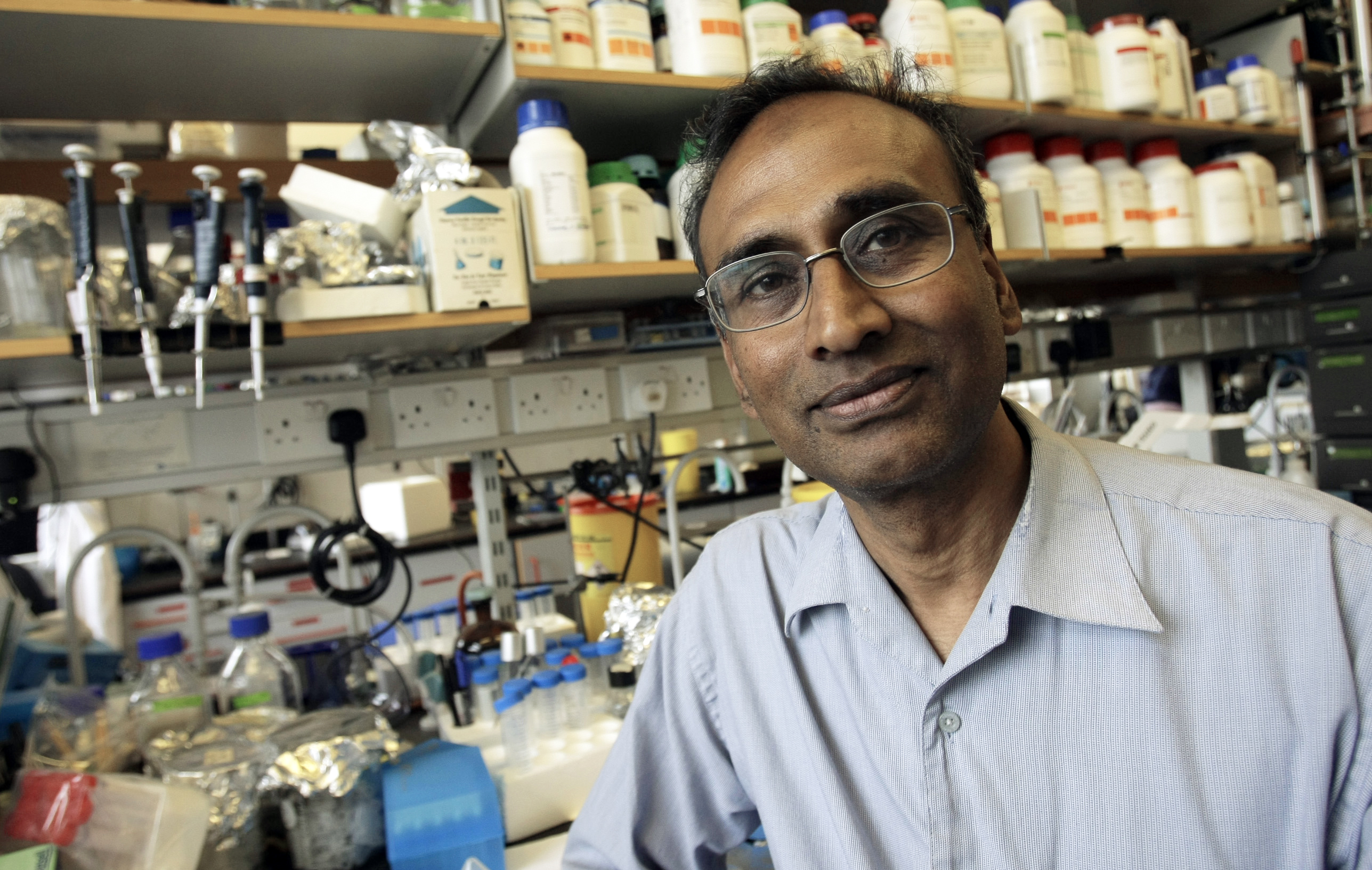
Did your wife support this decision?
Venki Ramakrishnan: We had done a sabbatical in Cambridge about seven years earlier. She liked Cambridge, but we were very happy in Utah. I had great colleagues at the University of Utah. My wife and I like hiking and the outdoors and so on. So it was a sacrifice, and I think what my wife said was, “Look, I’ve moved around with you all my life, ever since we got married, and this is my last move. So if you want to do it, go ahead. I’ll be okay with it, but I’m not moving again.” And I have to say, I keep getting offers to go back to the U.S. and so on, and those offers never last more than 10 seconds because Vera will just say, “Forget it, I’m not moving.”
Let’s talk about 2007, when you determined the atomic structure of the ribosome.
Venki Ramakrishnan: I should say it happened in two stages. The ribosome has two halves. There’s a smaller half and a larger half. The smaller half reads the genetic code, and the larger half makes the protein chain. Now, these two halves were solved in 2000 — the atomic structures. In some sense that was the really big breakthrough because those two halves came out of nothing.
So we did the small half, and Ada Yonath, who had started this work many years earlier, had her own version of the small half of the subunit. And the group at Yale — which included my old professor, Peter Moore, and was working with Tom Steitz, who was the crystallographer in the effort — solved the large half.
So it was quite a tense, competitive race to try and get there with the first look at the ribosome in atomic terms. But then, if you want to understand how the ribosome works, you can’t just have these two halves separately. It would be like if you looked at what an engine looked like and what a crankshaft looked like but never knew how they were put together and how they worked. Right? So the focus then went on to solving the entire ribosome caught in the act of actually doing its job, and that took many more years. Our breakthrough there came in 2006, when we could get the structure of the whole thing, with the piece of the genetic information, and with the little adaptor molecules that bring the building blocks of proteins into the ribosome.
If you want to understand how a machine works, you have to look at it at different stages, like when the spark plug is firing and the piston’s going down and when the wheel is turning and so on. So we try to arrest the ribosome at different stages. You have to think of it as a molecular machine that’s moving along, making protein according to instructions in our genes.
I have a very nice movie of it online that people can look up. If they just Google my name and “ribosome movie,” you can see it. You can see this, but the way you do that is by trapping the ribosome at different points and then determining the crystal structure of those states. And then you sort of interpolate like between frames of a movie.
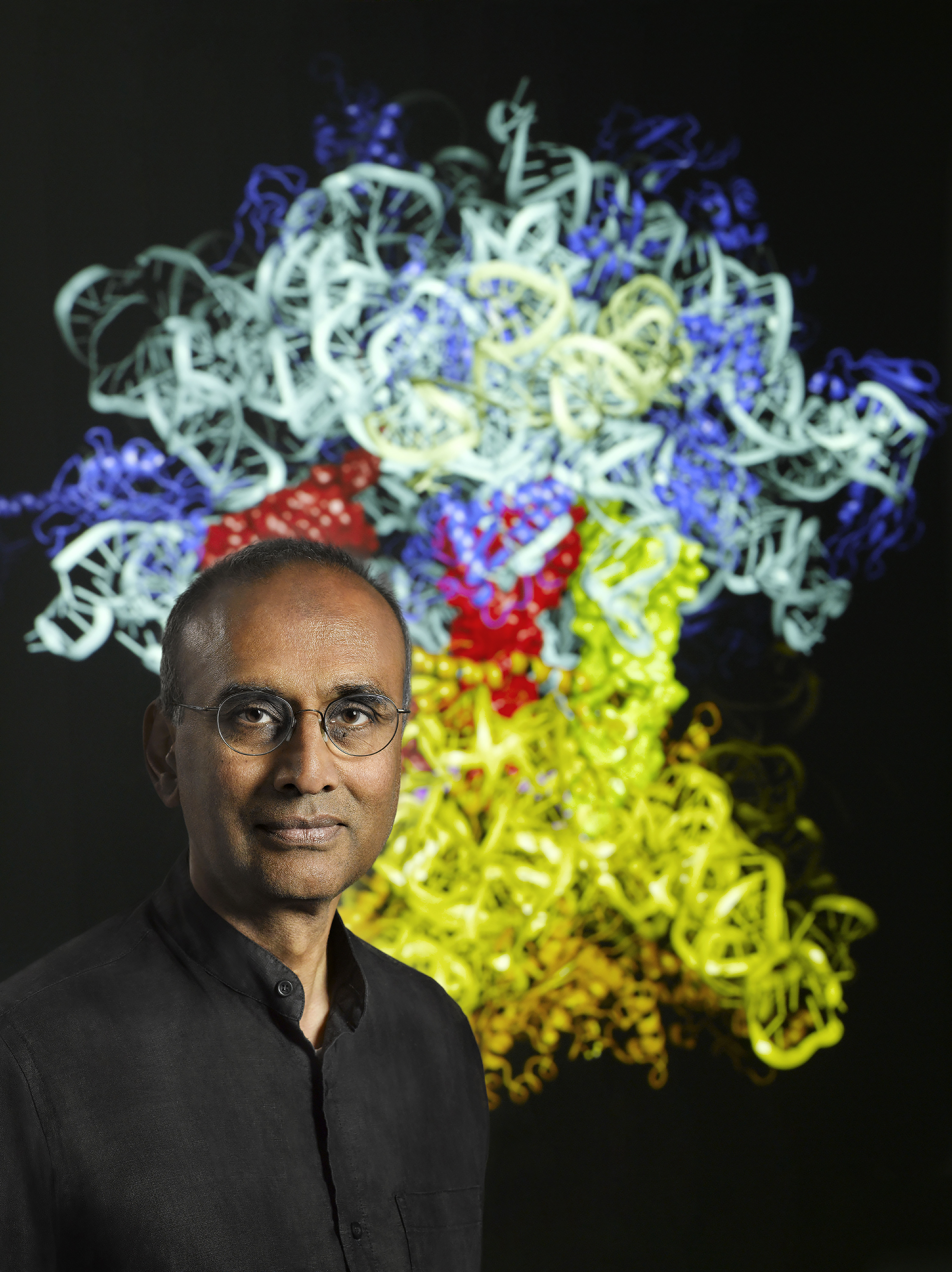
We understand there was a point when you realized what you’d found, and you told your fellow labmates, “We’re going to be famous.”
Venki Ramakrishnan: When you go to one of these big x‑ray beamlines — they come out of these huge accelerators, and that’s what shoots out these x‑rays — and you use the x-rays to hit your crystal and collect your data. So you apply for beam time on one of these instruments. You often get a day or two, but that means you have to work nonstop around the clock. So we were given two days of beam time at a beamline outside of Chicago at Argonne National Lab. It’s free if you’re academic. If you’re commercial, like a drug company, then you have to pay probably thousands of dollars a day, but for academics it’s free.
There were four of us, and we worked in 12-hour shifts so that there were always two people at any given time on the beamline. We staggered it so there’d always be one person who was tiring and one person who was fresh because we could not afford to make mistakes because we were in this tight competition. So at the end of it, we had to do a quick calculation to see if the experiment had worked. I remember one of us had made a slight mistake in the calculation and there’s no signal there at all. And I thought, “Oh my God, we’re just really out of it now!” But then I noticed that there was a slight mistake, and I redid the calculation and this huge signal — these peaks popped out. We were all exhausted. First of all, we had come from England to Chicago and then, working around the clock with no rest, and we were just exhausted. At the end of it, to know that it had worked, it was just all too much. I’m not such an exuberant guy, normally, but I couldn’t help it. I just got up and started dancing around the room, saying, “Guys, we’re going to be famous!” And actually, every one of them did very well. The graduate student who came with me from Utah, he’s now a professor at Caltech. All of them are doing very well.
Were you aware of medical implications of your Nobel-winning research?
Venki Ramakrishnan: Everybody knew that the ribosome is a target for lots of antibiotics, and it’s because it’s such an ancient molecule that our ribosomes are somewhat different from the ribosomes of bacteria. So some compounds will bind better to the bacterial ribosome and stop them from working, and they won’t do much to our own ribosomes. That’s how these antibiotics work. There are many of them: tetracycline or erythromycin, azithromycin. All of us, at some point, need them. We all knew that, and we knew that once we solved the structure, we’d be able to figure out exactly how these antibiotics bound to the ribosome. If we knew that, we could design compounds that bound even better at these sites or even to new sites. So that was not unexpected. In fact, when we published the first structure of this — what I call the small subunit — there were two back‑to‑back papers that we published. One was just a structure. Another was a structure with three antibiotics bound to it, to show how they stop different aspects of ribosome function. Not surprisingly, pharmaceutical companies have taken this up.
But there’s a bigger problem with antibiotics, which has nothing to do with science. We have a huge problem now with emerging infectious disease and antibiotic drug-resistant disease, but there’s not a lot of money in it yet. The reason is, if you have a patient who’s got an infection, you’re going to treat him with generic cheap antibiotics unless the patient has a drug‑resistant infection. Only then will you give the sort of new super-antibiotic. Right? So that means the patient pool is very small. So there’s not a lot of money to be made.
The other thing is, it’s not like taking an anti-cholesterol drug or a blood pressure or a diabetes drug, that you have to pop a pill every day of your life. This is, you take a pill for a week, and then you’re cured if the antibiotic’s any good. So there isn’t a huge profit. It has to do with how we fund new medicines. People don’t remember that penicillin was not funded by private pharmaceutical companies. The British government launched a huge effort to develop penicillin because more soldiers were dying of infection in World War II than were actually being killed by bullets. So there was a big push to develop penicillin. There’s no reason why governments and world health organizations — the Gates Foundation, all these nonprofits — can’t get into the act to develop new antibiotics for infectious disease.
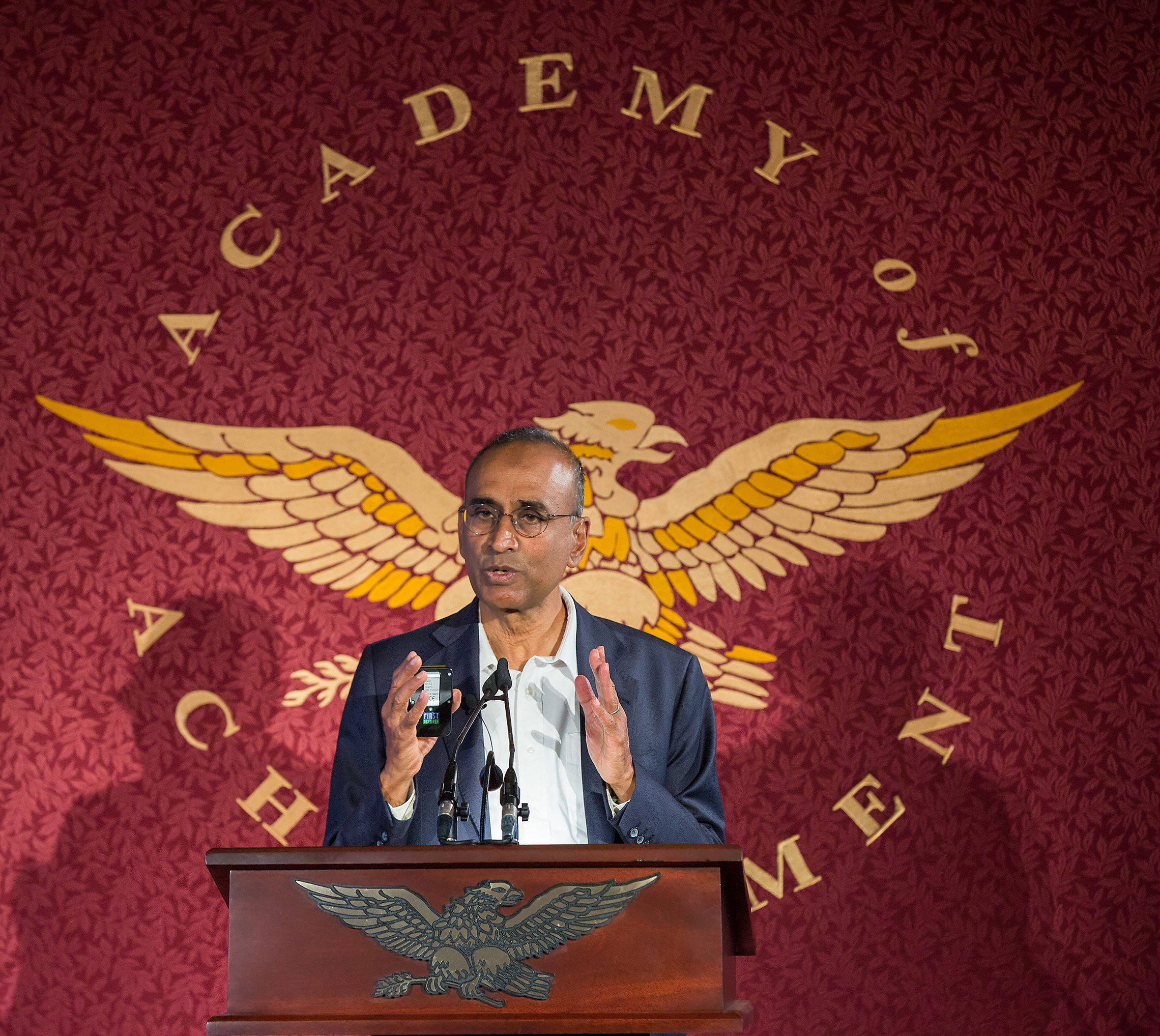
Are we overusing antibiotics?
Venki Ramakrishnan: We are. There are hundreds of thousands of prescriptions in the U.S. for the common cold or flu. They give antibiotics. It’s less true in Britain, where the NHS has very strict guidelines. Another big problem is that people discovered completely by accident that if you give an antibiotic slurry into animal feed, the animals get fatter. Probably what they’re doing is they’re changing the microbiome of the animal and they’re gaining weight. So the agricultural industry uses antibiotics in cattle feed. This is a terrible use of antibiotics because it’s a guarantee that you can get resistance and spread of resistance.
I think that we need to be very strict about antibiotic use and have proper guidelines. We could even consider rotating antibiotics so that you take some off the market for a while and so the resistance goes away. There are lots of things to think about.
What qualities are necessary to be a scientist?
Venki Ramakrishnan: I think the most essential quality is you have to be curious and interested. You have to want to know the answer, and you have to be interested in the problem. If you’re not interested in the question, you’re not going to spend all those long hours of drudgery trying to get at the answer. Even — whether you’re doing theory or whether you’re doing experiments — a lot of science is tedious. It involves just getting the job done, doing a lot of grunt work.
Aren’t there failures, too, along the way?
Venki Ramakrishnan: There’s lots of failure along the way. You try ideas, they don’t work, and you have to say, “Okay, that didn’t work; I’m going to try a different tack,” and so on. So it requires, first of all, a real curiosity and passion to know the answer. That’s a given. Then it requires patience. You have to be able to tolerate failure and so on. It requires a little bit of optimism, some mental strength. I joke that there are no pessimists in science. In my lab, there will always be what we call “Eeyores,” from Winnie the Pooh, people who are always complaining. But those people are not pessimists because if they were real pessimists — they’re just whiners — if they were real pessimists, they would have left the field. They would, because it takes a lot of optimism that, “Oh well, things will eventually work out. I don’t know how, but it’s going to work out.” So that’s the feeling that scientists need to have. I think collegiality and willingness to ask for help, I think it’s a very important aspect of science because you shouldn’t be embarrassed not to know something. Ignorance is not a sin. I would say my main strength is I’ve never been embarrassed to ask for help from colleagues or even my students and postdocs and so on. I think that allows you to overcome stumbling blocks. People will give you ideas or that sort of thing.
What is it you find so rewarding about your research into the ribosome?
Venki Ramakrishnan: The ribosome, in a way, goes back to a world even before there was DNA or protein because it is the ribosome that evolved to make proteins. So it must have come from a world before there were any proteins. So in a way, it goes right back to the early beginnings of life, where information was probably carried by RNA, and a lot of the reactions were done by RNA, as well, or maybe with some random proteins that happened to be around. It’s called the RNA World Hypothesis. So in that sense, the ribosome goes right back to the earliest times of life. So it’s quite fundamental. And as I said, it’s the thing that is a bridge between genetic information and the workhorses that actually carry out the functions of life, which are the proteins. I was lucky to hit on a problem that had such a long lifetime and still is interesting. That doesn’t happen very often in science.
